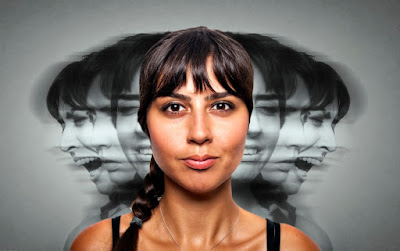Bipolar Disorder is characterized by the swing of moods
between mania and depression. It can be difficult for both a teen as well as
his or her family to cope with this illness. The symptoms of this disorder can
be tricky and challenging to manage. However, with the right tools and support,
it can be done. This article will provide a clear description of the typical
symptoms of bipolar disorder and the steps to take to manage them.
There are two distinct experiences that come with Bipolar Disorder
– mania and depression. Mania might feel good for a teen who is experiencing it
because it can sometimes come with great creativity, wonderful insights,
brilliant ideas, and feelings of invincibility. At the same time, mania can
feel uncomfortable. Here are some additional symptoms of mania that can make it
an uneasy experience:
·
Irritability
·
Intensity
·
Dangerous
choices
·
Risky
behavior with little awareness of any potential consequences
·
Belief
in doing well might keep a teen from taking their medication
A teen who is manic might max out his parent's credit card,
have unprotected sex with someone he or she hardly knows, or go gambling and
bet his or her entire savings at the casino. Mania might at the surface seem
like it's a version of happiness, but it's a mood that comes with significant
risks.
At some point, a teen with Bipolar Disorder will swing to
the other side of the spectrum and experience depression. Bipolar disorder (bi meaning two) is characterized by the
swing of moods between mania and depression, moving between both poles. An
episode of depression can come with the following symptoms:
·
Lasting
sad, anxious, or empty mood
·
Feelings
of hopelessness or pessimism
·
Feelings
of guilt, worthlessness, or helplessness
·
Loss
of interest or pleasure in activities
·
Loss
of interest in sexual activity
·
Decreased
energy or fatigue
·
Difficulty
making decisions, concentrating or focusing
·
Difficulty
in memory
·
Restlessness
or irritability
·
Oversleeping
·
Sudden
weight gain or loss
·
Suicidal
ideation
In order to best manage these experiences, there are some
relied upon treatment methods that have been successful over time. The cycles between mania and depression
can continue to worsen if not treated. And the swing between both these
states can be incredibly uncomfortable and unsafe. Typically, treatment of Bipolar
Disorder includes minimizing mood swings through the use of medication and
therapy. Typical forms of treatment might include Cognitive Behavioral Therapy, Rational Emotive Behavioral
Therapy (REBT), Dialectical Behavioral
Therapy, life skills training, psycho-education, and hospitalization, if
necessary. When medication is combined with therapy, there is a greater
chance of maintaining mental health and managing the symptoms of Bipolar
Disorder.
If you're a teen
experiencing the symptoms of Bipolar Disorder or if you haven't told an adult
about your experience, talk to a parent, teacher, or school counselor about
what's going on. The sooner you can get support for yourself, the better.

No comments:
Post a Comment